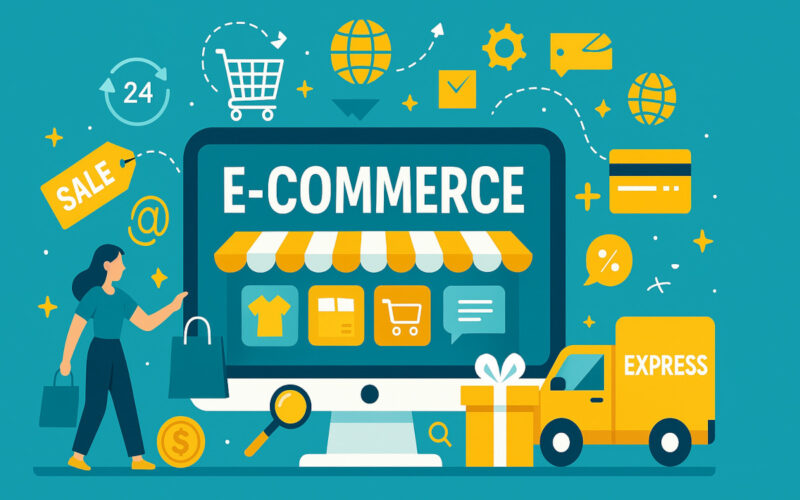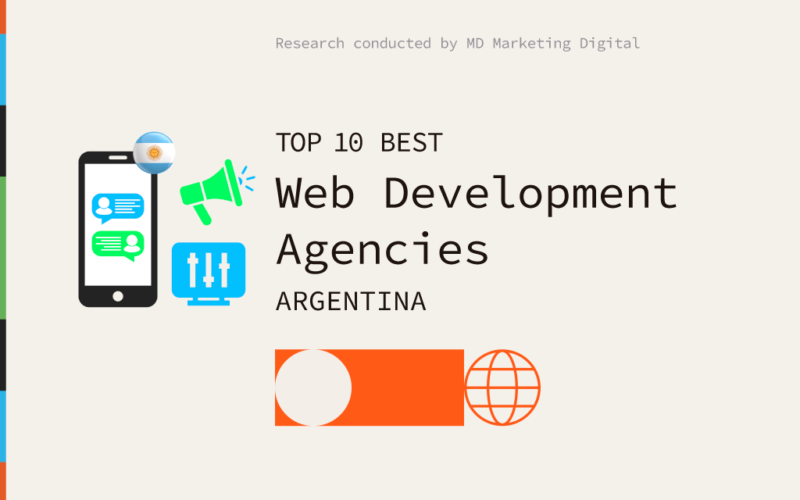Do you remember when buying something meant you absolutely had to leave the house, walk through stores, compare prices, and finally return with your purchase (or empty-handed)? How things have changed! Today, with just a few clicks, you can have almost anything delivered right to your doorstep. Welcome to the fascinating world of ecommerce. But what exactly is ecommerce, and why has it become so essential in our lives and in the digital marketing landscape?
The term ecommerce (also written as e commerce or e-commerce) essentially refers to electronic commerce: the buying and selling of goods or services over the Internet. It’s like the corner store or that big shopping mall, but hosted in the digital world.
Since its beginnings, it has evolved from simple online catalogs to incredibly sophisticated shopping experiences, personalized and accessible from any device. Understanding what ecommerce is is key, not just for consumers, but for any business looking to grow in the digital age. Its importance is such that it is no longer an option, but a strategic necessity for the survival and expansion of brands.
How does ecommerce work?
Understanding ecommerce, what it is and how it works is easier than it seems. Imagine you want to buy a new pair of sneakers. From your perspective as a user, the process usually goes like this:
- You search on Google or directly on your favorite online store,
- You browse the catalog (that digital showcase full of options),
- You choose the model and size,
- Add it to the shopping cart,
- Enter your shipping information, and
- Pay through a secure payment gateway.
Done! Now you just wait for them to arrive. It’s a user experience that’s smooth, designed to be intuitive and convenient.
- From the seller’s point of view, the magic happens behind the scenes:
- It all starts with an ecommerce platform (like Shopify, Tiendanube, WooCommerce, or a custom-built one), which powers the store.
- Here, the product catalog is managed with descriptions, photos, and prices.
- When you make a purchase, the payment gateway securely processes the transaction.
- Then comes the logistics: preparing the order and coordinating the shipment.
- Finally, good customer service is available to answer questions or resolve issues.
This entire digital ecosystem works together to get those sneakers to your feet.
Types of ecommerce: models and examples
The world of ecommerce is diverse and adapts to different needs and business relationships. Knowing what types of ecommerce exist will help you better understand the landscape. The most common models are classified based on who is selling and who is buying:
- B2C (Business-to-Consumer): This is the most well-known. Businesses sell directly to the end consumer. Think of giants like Amazon, online clothing stores like Zara, or supermarkets with digital sales like Carrefour. Here, digital marketing strategies focus on attracting the general public, generating desire, and facilitating impulsive or planned purchases.
- B2B (Business-to-Business): Companies sell products or services to other businesses. For example, a provider of management software for small businesses, an office supplies wholesaler, or a platform that connects manufacturers with distributors. Marketing here is more specific, focused on long-term relationships and solutions for concrete business needs.
- C2C (Consumer-to-Consumer): Platforms that facilitate buying and selling between individuals. The clearest example is Mercado Libre, where anyone can post and sell new or used items to other consumers. The platform acts as a secure intermediary.
- D2C (Direct-to-Consumer): Brands that manufacture their own products and sell them directly to the end consumer, without intermediaries (such as distributors or retailers). Digitally native brands like Hawkers (sunglasses) or many startups with specific products are examples. This gives them full control over the brand, customer experience, and data.

Own ecommerce vs marketplaces
When deciding to sell online, a common question is: should I create my own ecommerce site or sell through a marketplace like Amazon or Mercado Libre? An own ecommerce site (using Shopify, WooCommerce, etc.) gives you full control over your brand, design, customer data, and user experience, but it requires a higher initial investment in setup, maintenance, and especially in driving traffic.
Selling on a marketplace gives you immediate access to a huge customer base and simplifies aspects like payments and sometimes logistics. However, you’re competing directly with thousands of sellers, have less control over the experience, pay sales commissions, and it’s harder to build a strong brand and direct relationship with your customers.
Both options have pros and cons; the choice depends on your goals, resources, and type of product.
Product, service, and digital content ecommerce
Just as there are different types of ecommerce, there are also different products and services that can be sold through these platforms. So ecommerce isn’t limited to selling physical objects that arrive in a box. The variety is huge:
- Physical product ecommerce: This is the most traditional. You sell clothing, electronics, furniture, food… anything tangible that requires storage and shipping. Logistics is a critical factor here.
- Service ecommerce: through this type of ecommerce you can offer professional online services. It could be consulting, graphic design, private lessons, digital marketing services, etc. Delivery is usually digital or via appointments, and the focus is on demonstrating expertise and trust.
- Digital content ecommerce: this type of ecommerce offers intangible products that are downloaded or consumed online. We’re talking about ebooks, online courses, software, music, templates, stock photos. The big advantage is that there are no shipping or physical inventory costs, and scalability can be very high.
Successful ecommerce cases in LATAM
Latin America is a hotbed of ecommerce innovation. A flagship case is Mercado Libre. It started as a C2C and B2C marketplace and evolved into a complete ecosystem with payment solutions (Mercado Pago) and logistics (Mercado Envíos), playing a key role for thousands of SMEs and entrepreneurs in the region. Its success is based on understanding local needs and offering integrated solutions.
Another example is NotCo, the Chilean plant-based food startup. Although it’s not exclusively an ecommerce business, its initial D2C strategy through its own online store was crucial for building community, getting direct feedback, and positioning its innovative brand before expanding massively into supermarkets. They heavily used social media and content marketing to educate and attract their audience.
Tiendanube, as a platform, is another success story, democratizing the creation of online stores for thousands of entrepreneurs in LATAM by offering tools tailored to the local market.
How to create an ecommerce from scratch
Launching your own online store may seem overwhelming, but by following a few key steps, the process becomes manageable. Understanding how to create an ecommerce is the first step to bringing your digital business idea to life. First, define your market niche: what are you going to sell and to whom? Research the competition and demand.
Next, choose the right ecommerce platform. Popular options like Shopify, WooCommerce (for WordPress), or Tiendanube offer different features and pricing models. Consider scalability, ease of use, and costs.
Once you’ve chosen the platform, UX/UI design (User Experience and User Interface) is crucial. Your store must be attractive, easy to navigate, and responsive (mobile-friendly).
Set up payment gateways to accept credit cards, bank transfers, or other popular methods in your market. Define your logistics strategy: how will you manage inventory, packaging, and shipping?
Finally, don’t forget about customer service, and of course, upload your products! Remembering what an ecommerce is (a complete digital store) will help you avoid missing any essential element. And if you feel it’s too much for one person, you can seek support and management from a specialized ecommerce agency, such as MD Marketing Digital.
The importance of SEO in ecommerce
Your online store is ready—congrats! But how do you get customers to find it among millions of websites? This is where ecommerce SEO (Search Engine Optimization) comes into play.
In previous articles we explained what SEO is and what it’s for. But if you didn’t pay attention, we’ll repeat it. SEO is the set of techniques aimed at improving your store’s visibility in the organic (non-paid) search results on search engines like Google. An ecommerce SEO agency or an ecommerce specialist focuses specifically on optimizing online stores to attract qualified traffic (people truly interested in your products) and increase conversions (sales).
The work of an ecommerce SEO specialist includes everything from keyword research used by your potential customers, to technical site optimization, creating relevant content, and building online authority.
The ultimate goal is that when someone searches for “red size 42 sports sneakers,” your store shows up at the top of the results, multiplying your chances of selling without relying solely on paid advertising. A good SEO agency for ecommerce understands the specific needs of online stores and applies proven strategies to maximize their performance.
Benefits of SEO for ecommerce
Investing in ecommerce SEO isn’t an expense, it’s a strategic investment with multiple medium- and long-term benefits:
- Greater Organic Visibility: Appearing in the top positions on Google exposes you to thousands of potential customers.
- Qualified and Sustainable Traffic: You attract users who are actively searching for what you offer, increasing the chances of conversion. Unlike paid ads, this traffic doesn’t disappear when you stop paying.
- Better User Experience (UX): Modern SEO goes hand in hand with good UX. A fast, easy-to-navigate, mobile-optimized site not only pleases Google, but also your customers.
- Building Authority and Trust: Good rankings and valuable content position your brand as a leader in the sector.
- Long-Term Profitability: Although it takes time and effort, organic traffic tends to have a higher ROI (Return on Investment) than other channels in the long run.
- Relevant Content: SEO drives the creation of detailed product descriptions, buying guides, useful blog articles, etc., that educate and attract consumers.
Keys to optimizing an ecommerce with SEO
Optimizing an online store requires a specific SEO strategy. Some fundamental ecommerce SEO keys include:
- Transactional and Informational Keyword Research: Identify the terms users use to search for your products (transactional keywords like “buy [product]”) and to gather information before purchasing (informational keywords like “best [product] for [use]”).
- Logical Website Architecture: Structure your site in a clear, hierarchical way (Home > Categories > Subcategories > Products) so both users and search engines can navigate it easily.
- Product Page Optimization: Create unique, descriptive titles, detailed and original descriptions (avoid copying from the manufacturer!), use optimized images (with alt text), and include customer reviews.
- Link Building: Get high-quality links from other relevant websites to your store to increase its authority.
- Technical SEO: Make sure your site loads fast, is secure (HTTPS), mobile-optimized (mobile-first indexing), has no duplicate content, and uses structured data (schema markup) to help Google better understand your products.
- Content Marketing: Create a blog with helpful articles, buying guides, or product comparisons to attract informational traffic and position yourself as an expert.
Why work with an e-commerce agency?
Running a successful ecommerce involves many moving parts: the platform, the catalog, logistics, customer service… and of course, digital marketing. Trying to master all these areas can be exhausting and inefficient. This is where a specialized e-commerce agency, like MD Marketing Digital, makes all the difference. It’s not just about having an ecommerce SEO agency, but about having a 360° strategic partner.
A comprehensive ecommerce agency combines different disciplines to boost your results. At MD Marketing Digital, for example, we don’t just handle ecommerce SEO, we develop complete strategies that include online advertising (Google Ads, Social Ads), content marketing, email marketing, social media management, and web analytics.
This holistic approach ensures all efforts are aligned, maximizing return on investment and supporting you at every stage of your online business growth. Having a team of experts lets you focus on what you do best: running your business.
Take your ecommerce to the next level with MD Marketing Digital
Ecommerce has transformed the way we buy and sell, creating endless opportunities for businesses and consumers alike. We’ve explored what ecommerce is, how it has evolved, the different types of ecommerce (B2C, B2B, C2C, D2C), and how this complex yet fascinating digital system works, from platform to product delivery. We’ve also covered the essential steps to creating an ecommerce site and the critical importance of ecommerce SEO for ensuring visibility and long-term success.
Optimizing your online store with SEO techniques, guided by an ecommerce specialist or an ecommerce SEO agency, is essential for attracting qualified traffic and boosting your sales sustainably. But to truly take your business to the next level, a comprehensive strategy is key.
Want your ecommerce to take off and reach its full potential? At MD Marketing Digital, as a 360° e-commerce agency, we’re ready to help. We combine our expertise in SEO, advertising, content, and more to create a custom strategy that drives your results. Contact us today and let’s take your online store to success!
- What is ecommerce and how does it work? - April 11, 2025
- Google My Business: A Complete Guide - March 31, 2025
- Content Marketing: What Is It and What Is It For? - March 10, 2025
¿Qué te pareció este artículo?
What do you think about this post?




